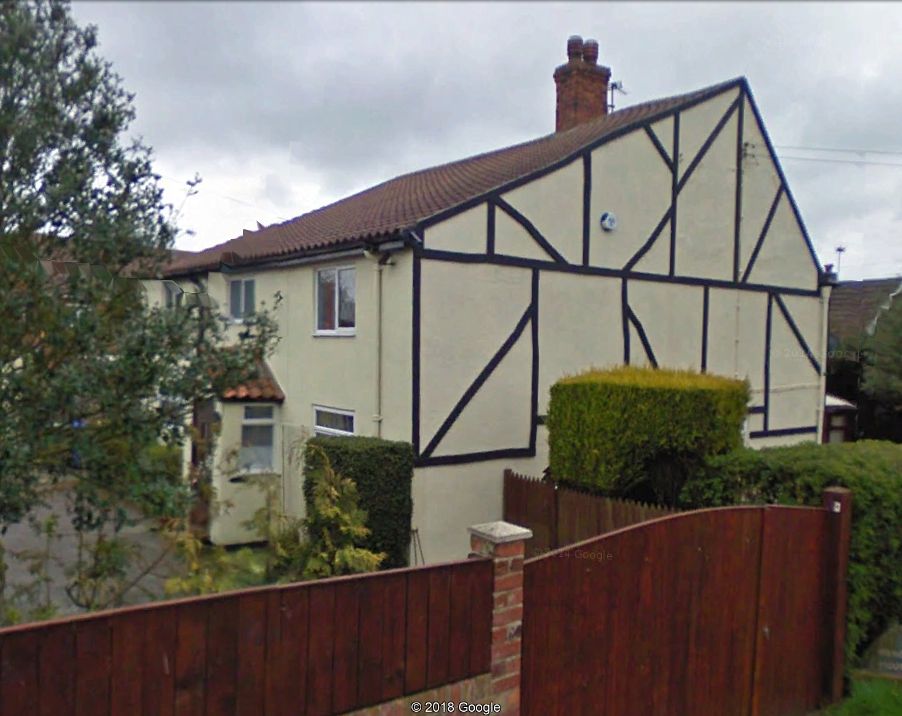The parish of Ottringham is situated in what was once the wapentake of Holderness, South division, part of the historical East Riding of Yorkshire (see maps in Introduction). It lost a parcel of land to neighbouring Patrington during the 1832 parish boundary changes, but still includes the hamlet of Ottringham Marsh. Ottringham, like Ottrington in the North Riding, means the place of the Ottrings, descendants of an Anglian called Ótr, a name perhaps based on the character from Old Norse mythology who was able to take the form of an otter. The parish’s southern limit was formerly the Humber estuary, but it now lies two kilometres further north owing to 18th century land reclamation.

At the time of the Conquest there were then two manors in Ottringham. One, which included the church and the priest, was held by the canons of St. John of Beverley under the overlordship of the archbishop of York, the latter remaining as tenant in chief after 1086. The other was held in 1066 by Thor and Thorkil and in 1806 by Henry of Ottringham under the Drogo de la Beuvrière. Ulf the Fenman also had lands in the parish as part of his Aldbrough possessions, but by 1086 they had also passed to Drogo, forming part of his vast single holding of Holderness. In addition, land in Ottringham parish was given to the abbeys of Meaux in Holderness and Thornton in North Lincolnshire, both founded by Willliam le Gros, count of Aumale, reverting to the Crown at the Dissolution.
Part of the first manor passed from the canons of Beverley through various families, including the Constables, Hildyards and Hothams. The manor house was variously called Uphill, Uphall and Upper Hall Garth in the 16th and 17th centuries and today simply Manor House, if indeed the latter refers to the same house. The Ottringham family held the other part in the early 1100s, but its inheritance was subsequently disputed and the estate was finally divided between the Ottringhams and the Lascelles, both families giving their lands to the Abbey of Meaux in the late 1200s. At the Dissolution the lands held by Meaux Abbey and St. John of Beverley reverted to the Crown, and were later settled on the Prince of Wales who became Charles I, hence the manor’s alternative name: the Prince’s manor. It was let to various families before reverting once again to the Crown. The second manor held initially by Thor and Thorkil descended essentially in the same way as the first.
The church at Ottringham is dedicated to St. Wilfred, sometimes retaining the Anglo-Saxon spelling St. Wilfrid. It is built mainly of boulders and ashlar and consists of a chancel and a nave, both of which contain remnants of an earlier Norman church; a south chapel, newly built in c1500; a 14th century south porch and a west tower, topped by a tall, octagonal spire, all of the same period. Aisles were added to the nave in the 13th century, the north aisle being rebuilt and widened in the 15th century, when the clerestory was also built. Restoration work was carried out during the 19th century and the early 20th. A rare feature of the church is its simple stone lectern in the chancel wall, shaped to hold a book.
 |  |  |  |
Ottringham Marsh, lying south west of the village of Ottringham, was a hamlet of ten houses in the 18th century, of which only Nearmarsh farm survives today.

Ottringham played an important but little known role during the Second World War. In 1943 the BBC built a transmission station to the east of the village on the road to Patrington, named BBC Ottringham or O.S.E.5. Its primary purpose was to counter German jamming signals and to broadcast propaganda into Germany, but it also transmitted both medium and long wave radio into the heart of occupied Europe. With an output power of 800 kilowatts, its four transmitters made BBC Ottringham the most powerful transmission station in the world at the time. After the war it became too expensive to run and was deconstructed, its transmitters being moved to Droitwich. The site of BBC Ottringham is now occupied by a company specialising in the design and manufacture of prefabricated and modular buildings.
Several life events of the Pickerings of Welwick took place in Ottringham church between the 22nd and 24th generations, but many others took place in the surrounding villages, so that it is not certain which members of the family actually lived in the village, if any. The Welwick Pickerings also farmed at Cherry Burton, and later generations settled much further afield in the USA, South Africa and even Brazil.
Sources:
http://www.genuki.org.uk/big/eng/YKS/ERY/Ottringham
https://intel-hub.eastriding.gov.uk/parish-profile/#/view-report/bd6a0cb7f85a46998f874a42bfd0dc8e/PP109
https://en.wikipedia.org/wiki/Ottringham
https://en.wikipedia.org/wiki/Otr_(mythological_character)
https://opendomesday.org/place/TA2624/ottringham
Victoria History of the County of York, East Riding, vol. 5, pp. 74-85: (not online)
The Buildings of England, York and the East Riding, pp. 639: https://archive.org/details/yorkshireyorkeas0000pevs/page/639
Church of Saint Wilfred: https://historicengland.org.uk/listing/the-list/list-entry/1160874?section=official-list-entry
Nearmarsh farmhouse: https://historicengland.org.uk/listing/the-list/list-entry/1160867?section=official-list-entry
BBC Ottringham: https://www.bbc.co.uk/humber/content/articles/2006/02/19/bbc_ottringham_feature.shtml
Ottringham Calling: https://archive.org/details/ottringham-callingworld-war-two
